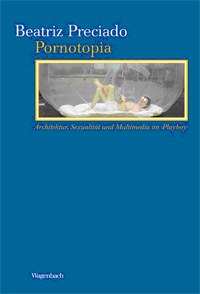Bunny Habitat: Pin-Up Architecture and Multimedia Networks in the Age of Spectacular Domesticity
DOI:
https://doi.org/10.22029/ko.2013.747Abstract
A dissertation as a bestseller and an international reading tour: Spanish cultural studies researcher and cult author Beatriz Preciado achieved just that with her book Pornotopia. Arquitectura y sexualidad en 'Playboy' durante la guerra fria (Pornotopia: Architecture, Sexuality and Multimedia in "Playboy"). The German edition was published in 2012 to much acclaim by the popular media as well as the academy. It is based upon Preciado’s dissertation in the field of architecture theory, which she finished at the University of Princeton. Here, she demonstrates the emancipation of the heterosexual man from a monogamous husband to a 'postdomestic' playboy – albeit as a historical development, which may also be read as a swan song of heterosexuality. While the title Pornotopia seduces readers into buying the book, it misleads nonetheless: sexuality is not exactly the main topic in this study that is as compact as it is dense. The term 'pornography,' for Preciado, is not defined sexually but in architectural and medial terms, as a "mechanism which produces that which is private in public and transforms domesticity into a spectacle" (p. 9). Architecture, likewise, is not the primary topic, at least not in the traditional sense of a built and therefore materialized substance. Rather, the book deals with architecture as a virtual creation, a production of (interior) spaces, or as a Foucauldian 'biopolitical dispositif' – whereby architecture serves as an apparatus of affects which generates subjectivity, spatializes sexuality, and negotiates desire.

Downloads
Published
Issue
Section
License
All articles (not book covers) in KULT_online from issue 50 on are published under the license Creative Commons Attribution 4.0. All published articles may be reused under the conditions of the license, particularly for commercial purposes and through editing the article (Human-Readable Summary). All authors (have) permitted the publication under the above mentioned license. There is no copyright transfer towards KULT_online. For all book covers specific rights might be reserved, please contact the respective publisher for any lawful reuse. All contributions published in issue 1-49 of KULT_online are free available online and protected by the German Copyright Law.



